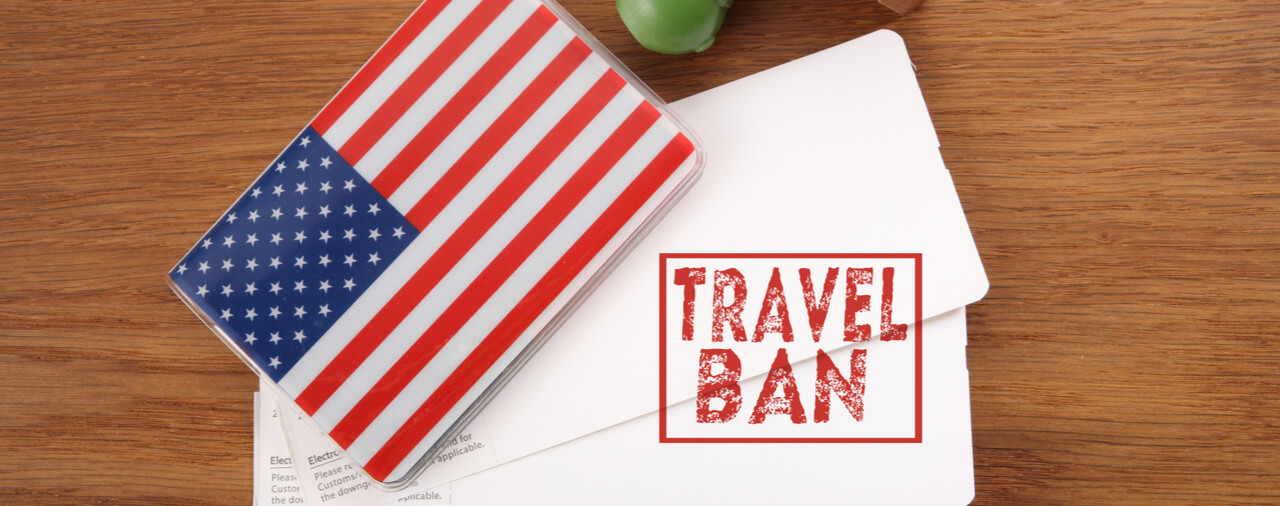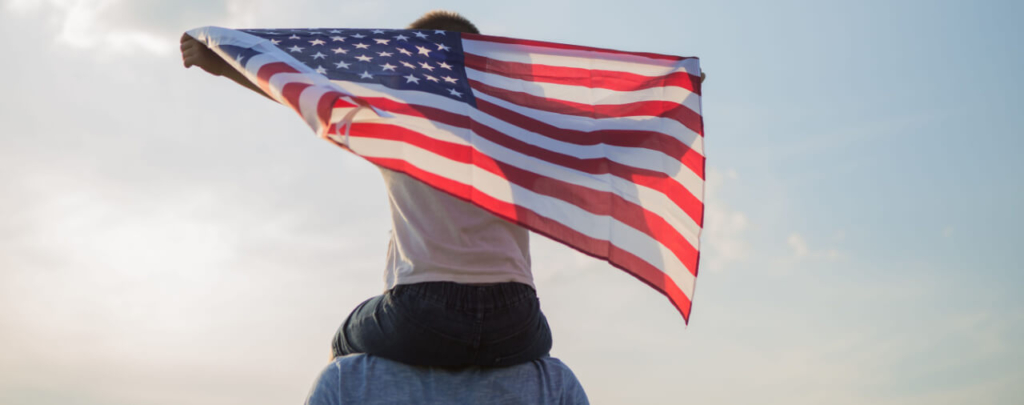- Update
- Introduction
- Per Curiam Opinion
- Part I-A and I-B: Overview of Facts and Procedural History
- Part II: Government’s Arguments
- Part II-A: Supreme Court Grants Certiorari
- Part II-B: Supreme Court Lifts Preliminary Injunctions Against Section 2 In Part
- Part II-B Continued: Individuals Protected by the Injunction
- Part II-C: Same Standard Applied to Injunction Against Section 6
- Concur/Dissent: Justice Thomas
- Conclusion
Update
(Oct. 12, 2017 Update): The Supreme Court dismissed the challenge arising from the Fourth Circuit decision in Trump v. IRAP as moot, and accordingly vacated the judgment of the Fourth Circuit. The Supreme Court has not yet decided what it will do with the challenge arising from the Ninth Circuit decision in Trump v. Hawaii. Please see our blog to learn more [see blog].
(Sep. 26, 2017 Update): The Supreme Court canceled oral arguments scheduled for October 10 due to the issuance of a September 24, 2017 Presidential Proclamation with new travel restrictions [see article]. We will update the website with more information if and when the Supreme Court reschedules oral arguments.
(July 20, 2017 Update): The Department of State and the Department of Homeland Security released documents explaining how they will implement Executive Order 13780 in light of the Supreme Court decision discussed in this article. After reading about the Supreme Court decision, please see our full article on the implementation of the Executive Order for more information [see article].
Introduction
On June 26, 2017, the Supreme Court of the United States issued a per curiam (by multiple judges) opinion in Trump v. International Refugee Assistance Project, 582 U.S. ___ (2017) (consolidated with Trump v. Hawaii). You may read the opinion here [PDF version].
The case concerns challenges to President Donald Trump’s Executive Order 13780, issued on March 6, 2017 [PDF version]. Multiple provisions of the Executive Order had been enjoined by Federal District Courts, and the injunctions were mostly upheld by the United States Courts of Appeals for the Fourth and Ninth Circuits. The two provisions primarily at issue before the Supreme Court were the temporary suspension of entry of nationals of six countries [see article] and the temporary suspension of refugee travel [see article]. The Trump Administration appealed from the Fourth Circuit decision and the case was consolidated with the one arising from the Ninth Circuit.
The Court granted the Government’s petition for certiorari in the cases, meaning that it will hear oral arguments next October and presumably decide the cases next term. The Trump Administration also requested a stay of the injunctions. The Supreme Court granted the request for the stay, in part, holding that the injunction no longer applies to individuals who lack a bona fide relationship with a person or entity in the United States.
In this article, we will examine this initial opinion of the Supreme Court in Trump v. International Refugee Assistance Project (IRAP) and what it will mean until the Supreme Court decides the case on the merits. Furthermore, we will examine the opinion of Justice Clarence Thomas, joined by Justices Samuel Alito and Neil Gorsuch, which concurred with the Opinion of Court, in part, but which dissented to the extent that they would have lifted the injunction in its entirety.
Per Curiam Opinion
The following subsections will examine the per curiam opinion of the Supreme Court. After going through the Opinion of the Court, we will examine the concur/dissent opinion of Justice Thomas, which would have gone further than the majority.
Part I-A and I-B: Overview of Facts and Procedural History
On January 27, 2017, President Donald Trump issued Executive Order 13769 [PDF version] [see article]. Executive Order 13769 dealt with the same issues as the Executive Order 13780 at issue in Trump v. IRAP but it was broader with respect to the suspension of entry and suspension of refugee travel provisions. Multiple Federal District Courts enjoined aspects of Executive Order 13769, and one of the injunctions was upheld by the United States Court of Appeals for the Ninth Circuit in Washington v. Trump, 847 F.3d 1151 (9th Cir. 2017) [PDF version] [see opinion blog].
Rather than pursue the defense of Executive Order 13769 further, the Trump Administration opted to replace it with Executive Order 13780. Executive Order 13780 — which is the one before the Supreme Court in Trump v. IRAP — narrowed the scope of the suspension of entry and suspension of refugee travel provisions and clarified the circumstances in which an affected alien would be able to seek a waiver of its provisions. Furthermore, similarly to the original Executive Order 13769, the current Executive Order directs the Secretary of Homeland Security to conduct a global review of whether foreign governments provide adequate information to the United States about nationals applying for U.S. visas. It also directs the Secretary of State to review the United States Refugee Assistance Program (USRAP) application and adjudication procedures to ensure that it screens out refugee applicants who would pose a danger to the national security of the United States. The Executive Order also reduced the refugee cap to 50,000 for Fiscal Year 2017.
Multiple lawsuits were filed in Federal Court against sections 2 (suspension of entry provisions) and 6 (suspension of refugee travel provisions). In International Refugee Assistance Project v. Trump, ___ F.Supp.3d __ (D. Md., Mar. 16, 2017) [PDF version], the United States District Court for the District of Maryland enjoined Section 2(c) of the Executive Order, which covers the suspension of entry of nationals of six countries. The Maryland decision did not enjoin any of the portions of the Executive Order relating to refugees. However, in Hawaii v. Trump, ___ F.Supp. 3d (D. Haw., Mar. 29, 2017) [PDF version] [see opinion blog on initial March 15 decision], the United States District Court for the District of Hawaii enjoined in full sections 2 and 6 (relating to refugees) of the Executive Order. Notably, the Hawaii decision did not only apply to refugees, but also enjoined the Department of Homeland Security (DHS) and Department of State (DOS) from conducting reviews relating to information provided about foreign nationals and the application and adjudication procedures in the USRAP. The injunction also applied to the reduction of the refugee cap.
On May 25, 2017, the United States Court of Appeals for the Fourth Circuit upheld in full the Maryland District Court injunction in its decision titled International Refugee Assistance Project v. Trump, 857 F.3d 554 (4th Cir. 2017) [PDF version]. The Fourth Circuit held that Section 2(c) of the Executive Order was primarily religious in purpose, thereby violating the Establishment Clause of the United States Constitution. The Department of Justice (DOJ) appealed from the Fourth Circuit decision to the Supreme Court [see opinion blog].
Subsequent to these events, the Ninth Circuit upheld most of the Hawaii injunction in its decision titled Hawaii v. Trump, ___ F.3d ___ (9th Cir. 2017) (per curiam) [PDF version]. There were two areas in which the Ninth Circuit differed from the Hawaii District Court. Firstly, the Ninth Circuit upheld the injunction on statutory grounds — that President Trump had exceeded his authority under the Immigration and Nationality Act (INA) — rather than on constitutional grounds, that the Executive Order violated the Establishment Clause. Secondly, the three-judge panel of the Ninth Circuit lifted the injunction relating to the internal executive review ordered in Sections 2 and 6.
Interestingly, the 90-day period specified for the restriction of entry of nationals of six countries was slated to expire. Accordingly, on June 14, 2017, President Trump issued a memorandum to Executive Branch officials declaring that the new effective date of the enjoined provisions of Executive Order 13780 would be after any such injunctions were lifted, with respect to each provision [see article].
Part II: Government’s Arguments
The Government sought review by the Supreme Court of several issues presented by the Fourth Circuit decision:
1. Whether the respondent lacked standing to challenge the Executive Order (his wife received an immigrant visa on June 22, 2017);
2. Whether the respondent’s Establishment Clause claim failed on its merits.
Regarding point one, the Supreme Court has reserved the issue of standing until the merits stage. It took the position that the standing issue was not relevant to its analysis of whether to stay the injunction.
Regarding point two, the Government argued that the Fourth Circuit erred by considering whether Section 2(c) (suspension of entry provision) has a primarily religious purpose. Rather, the Government argued that Section 2(c) rests on the “facially legitimate and bona fide” justification of protecting national security, citing to the Supreme Court decision in Kleindienst v. Mandel, 408 U.S. 753, 770 (1972) [PDF version]. The Government also argued that the Fourth Circuit erred by focusing on President Trump’s campaign trail comments as evidence that Section 2(c) has a primary religious purpose when the language of Section 2(c) is religiously neutral on its face.
The Government also challenged several aspects of the Ninth Circuit’s decision in Hawaii v. Trump. Similarly to its arguments regarding the Fourth Circuit decision, the Government argued that the respondents Hawaii and Dr. Elshikh lack standing to bring the suit. At a minimum, the Government argued that the injunction was overbroad.
The Government’s primary argument regarding the suspension of entry provision rested on the broad language of section 212(f) of the INA [see article], which allows the President to suspend the entry of any alien or of a class of aliens where the President finds that the entry of such alien or aliens is detrimental to the interests of the United States. The Government argued that the Ninth Circuit engaged in impermissible judicial second-guessing of the President’s national security judgment in holding that there was no finding that the entry of the excluded classes of aliens would be detrimental to the interests of the United States.
In addition to asking the Supreme Court to take the case, the Government asked the Court to stay the injunctions issued by the Fourth and Ninth Circuits. The Government argued that, due to the potential of dangerous individuals entering the United States, it would likely suffer irreparable harm were the injunction of the Section 2(c) suspension of entry provision to remain in effect. Furthermore, the Government argued that the suspension is necessary to reduce the burden on Executive Branch agencies while they conduct their review.
Part II-A: Supreme Court Grants Certiorari
The Supreme Court granted both of the Government’s petitions for certiorari, and it consolidated the Fourth and Ninth Circuit cases for argument. The Court will hear the cases during the first session of the 2017October Term. The Court added an additional question to those presented in briefings of the cases: “Whether the challenges to [Section] 2(c) became moot on June 14, 2017.”
Part II-B: Supreme Court Lifts Preliminary Injunctions Against Section 2 In Part
The Supreme Court granted the Government’s applications to stay the injunctions of Section 2(c) of the Executive Order 13780 to the extent to which the injunctions prevent enforcement of the provision against “foreign nationals who lack any bona fide relationship with a person or entity in the United States.” It left the injunction in place with regard to the respondents in both the IRAP and Hawaii decisions and those similarly situated.
The Court explained that the purpose of a preliminary injunction is not to conclusively determine the rights of the parties, but to balance the equities as the case moves forward. University of Texas v. Camenisch, 451 U.S. 390, 395 (1981) [PDF version]. Under Winter v. Natural Resourcers Defense Council, Inc., 555 U.S. 7, 20, 24 (2008) [PDF version], courts must also consider the overall public interest.
The Fourth and Ninth Circuit injunctions granted relief to the respondents in the cases. The Fourth and Ninth Circuits reasoned that respondents Doe and Dr. Elshikh, respectively, would be harmed by the Executive Order’s denial of entry to their family members. Furthermore, the Ninth Circuit reasoned that the implementation of Section 2(c) would harm Hawaii by preventing students from the six affected countries who had been admitted to the University of Hawaii from entering the country. Accordingly, the Fourth and Ninth Circuits found that these hardships were sufficient to outweigh the Government’s interest in implementing and enforcing Section 2(c). The courts also enjoined Section 2(c) with respect to similarly situated individuals. Notably, these injunctions were premised in part on the burden to persons or entities in the United States (the Fourth Circuit specifically cited to First Amendment concerns).
However, the Supreme Court explained that the Fourth and Ninth Circuit injunctions went further than just protecting the respondents and similarly situated individuals. The Fourth and Ninth Circuits also enjoined enforcement of Section 2(c) with regard to foreign nationals abroad who have no connection to the United States at all. Here, the Court found that “[t]he equities relied on by the lower courts do not balance the same way in that context.” The Court explained that denying entry to a foreign national abroad with no connection to the United States “does not burden any American party by reason of that party’s relationship with the foreign national.” The Court added that neither the Fourth nor Ninth Circuit explained how such a broad injunction “would impose any legally relevant hardship on the foreign national himself.” Citing to Kleindienst v. Mandel, 408 U.S. 753, 762, the Court noted that unadmitted and nonresident aliens have no constitutional right to enter the United States. The Court concluded by stating that whatever burdens may exist for the enforcement of Section 2(c) against foreign nationals abroad with no connection to the United States, “they are, at a minimum, a good deal less concrete than the hardships identified by the [Fourth and Ninth Circuits].”
Furthermore, the Court explained that the Executive’s power to enforce Section 2(c) is “undoubtedly at [its] peak” where there is no tie between the foreign national and the United States. The Court also noted that Section 3(c)(i)-(iv) of Executive Order 13780, in fact, distinguishes between those foreign nationals who have connections to the United States and those who do not [see section]. Citing to Holder v. Humanitarian Law Project, 561, U.S. 1, 28 (2010) [PDF version], the Court explained that the Government’s interest in preserving national security is “an urgent objective of the highest order.” For this reason, the Court found that enjoining the Government from enforcing Section 2(c) against foreign nationals with no connection to the United States would injure the interests of the Government without alleviating hardship to anyone else.
For those reasons, the Court granted the Government’s request to limit the scope of the injunctions against Section 2(c) of the Executive Order of 13780 to only those parties who are similarly situated to the respondents in the IRAP and Hawaii cases. The Court made clear that all foreign nationals with no credible claim of a bona fide relationship with a person or entity in the United States are now subject to Section 2(c) of Executive Order 13780.
Part II-B Continued: Individuals Protected by the Injunction
The Court stated that “[t]he facts of [the lower court cases] illustrate the sort of relationship that qualifies” as “a bona fide relationship with a person or entity in the United States” under the limited injunction.
First, the Court explained that regarding individuals, “a close familial relationship is required.” The Court continued by explaining that, for a foreign national who seeks to enter the United States to live with or visit a family member, a close familial relationship is required with an individual in the United States. For example, the Court found that being the wife or mother-in-law of a U.S. citizen in the United States would qualify (describing two of the respondents).
Second, regarding entities, “the relationship must be formal, documented, and formed in the ordinary course, rather than for purpose of evading [Executive Order 13780].” For example, students from the six affected countries who were previously admitted to the University of Hawaii have such a qualifying relationship. A worker who accepted a qualifying offer of employment from an American company or a lecturer who has accepted an offer to address an American audience would similarly be protected under the injunction. However, the Court made clear that a relationship entered into for purpose of circumventing Section 2(c). For example, the Court stated that a nonprofit group dedicated to immigration issues “may not contact foreign nationals from the designated countries, add them to client lists, and then secure their entry by claiming injury from their exclusion.”
Furthermore, the Court made clear that the executive review in Section 2(a) may proceed promptly, if it is not already underway. It is worth noting that the Ninth Circuit had already lifted that portion of the injunction on June 12.
Part II-C: Same Standard Applied to Injunction Against Section 6
Although the Fourth Circuit injunction did not apply to the refugee travel provisions in Section 6, the Ninth Circuit injunction did.
The Court held that the equitable balance it struck regarding section 2(c) also applied to section 6(a) suspension of refugee travel. The Court held that if an American individual or entity has a bona fide relationship with a particular individual seeking to enter the United States as a refugee, that American individual or entity can legitimately claim a concrete hardship if the refugee applicant is excluded. However, refugee applicants with no such connection to the United States are not protected under the injunction, because in such cases the balance of equities tips in favor of the Government’s interest in protecting the national security of the United States. Haig v. Agee, 453 U.S. 280, 307 (1981) [PDF version].
For these reasons, the Court granted the Government’s request to stay the injunction, in part, with respect to Sections 6(a) (suspension of refugee travel) and 6(b) (reduction of the refugee cap). The injunction now protects only those refugee applicants who can credibly claim a bona fide relationship with an individual or entity in the United States. This applies even if the admission of such individual would lead to exceeding the 50,000 person cap for fiscal year 2017 set forth in Section 6(b). However, Sections 6(a) and (b) apply to all other persons who have no such connection to a person or entity in the United States.
Concur/Dissent: Justice Thomas
Justice Clarence Thomas filed an opinion concurring in part and dissenting in part. He was joined in full in his opinion by Justices Samuel Alito and Neil Gorsuch.
Justice Thomas agreed with the Court in staying the preliminary injunctions. However, Justice Thomas would have stayed the injunctions in full, meaning he would have allowed the Executive Order 13780 to be enforced in full as written.
Citing to Nken v. Holder, 556 U.S. 418, 434 (2009) [PDF version], Justice Thomas listed the two “most critical” factors that must be taken into account in deciding whether to grant a stay:
1. “[W]hether the stay applicant has made a strong showing that [it] is likely to succeed on the merits”; and
2. “[W]hether the applicant will be irreparably injured absent a stay.”
Citing to Barnes v. E-Systems Inc. Group Hospital Medical & Surgical Ins. Plan, 501 U.S. 1301, 1302 (1991) (Scalia, J. in chambers) [PDF version], Justice Thomas explained that the first factor is satisfied where the party seeking the stay shows both that there is a reasonable probability that certiorari will be granted and that there is a significant probability that the judgment will be reversed. If the equities regarding the first prong are satisfied, the Court must move them to balance the equities in prong two by “explor[ing] the relative harms to applicant and respondent as well as the interests of the public at large.” Id., at 1304-1305.
Firstly, Justice Thomas found that the Government satisfied the standard for issuing a stay pending certiorari, evinced by the fact that the Court did, in fact, grant certiorari. Secondly, Justice Thomas agreed with what he characterized as “the Court’s implicit conclusion that the Government has made a strong showing that it is likely to succeed on the merits-that is, that the judgments [of the lower courts] will be reversed.” However, it is worth noting that some of the six justices who did not join Justice Thomas’s concurring opinion may not agree with this characterization. Thirdly, Justice Thomas found that the Government had established that the failure to lift the stay would cause irreparable harm in that the failure would interfere with the Government’s compelling need to protect the security of the United States. Finally, Justice Thomas found that weighing the Government’s interest in protecting national security against the hardships the respondents in the two cases would suffer if the injunctions were stayed in full led to the conclusion that the balance of equities favors the Government. For this reason, Justice Thomas would have granted in their entirety the Government’s applications for a stay.
Justice Thomas took the position that reasonable minds could disagree on where the balance of equities lies between the Government and the actual respondents in the cases. To this effect, he suggested that it would have perhaps been reasonable to leave the injunction in place only for the respondents. However, he criticized the Court for keeping the injunctions in place “with regard to an unidentified, unnamed group of foreign nationals abroad.” To this effect, Justice Thomas noted that no class has been certified, and no party before the Court had asked for the scope of relief that the Court provided. Citing to Califano v. Yamasaki, 442 U.S. 682, 702 (1979) [PDF version], Justice Thomas took the position that the relief provided should not be more burdensome than the relief requested.
As a practical matter, Justice Thomas also expressed concern that “the Court’s remedy will prove unworkable.” He noted that it would require executive branch officials to decide “on peril of contempt” whether specific individuals from the six affected countries (and refugee applicants) “have a sufficient connection to a person or entity in this country.” Justice Thomas stated that this would invite “a flood of litigation” until the Court decides the cases on the merits, leaving lower courts and others to “struggle to determine what exactly constitutes a ‘bona fide relationship,’ who precisely has a ‘credible claim’ to that relationship, and whether the claimed relationship was formed ‘simply to avoid 2(c)…’” Furthermore, Justice Thomas has an additional concern: “[L]itigation of the factual and legal issues that are likely to arise will presumably be directed by the two District Courts whose initial orders in these cases this court has now-unanimously—-found sufficiently questionable to be stayed as to the vast majority of the people potentially affected.”
Conclusion
As most people expected, the Supreme Court opted to hear the cases challenging President Trump’s Executive Order 13780 in Trump v. IRAP. The consolidated cases will likely be scheduled for oral argument in October.
What was less clear was exactly how the Court would limit the injunctions — if at all — in the interim. The answer turned out to be significantly so, as the Court unanimously agreed that the Fourth and Ninth Circuit injunctions were impermissibly overbroad with respect to foreign nationals who lack a connection to the United States. The injunction was left in place for individuals similarly situated to the respondents (note that many of the people still covered would have likely been eligible for waivers under Executive Order 13780 even without the injunction). The Court’s reasoning applies both to the six countries covered in Section 2(c) and to refugees under Sections 6(a) and (b). It remains to be seen how the Government and the lower courts will implement what is left of the injunction until the Supreme Court resolves the issue sometime after the October oral argument We will update the website with news to that effect.
Regarding the prospects for the case going forward, there appear to be, at the very least, three justices very inclined toward the Government’s position (Justices Thomas, Alito, and Gorsuch). Although all nine justices found that the injunction was overbroad, th





